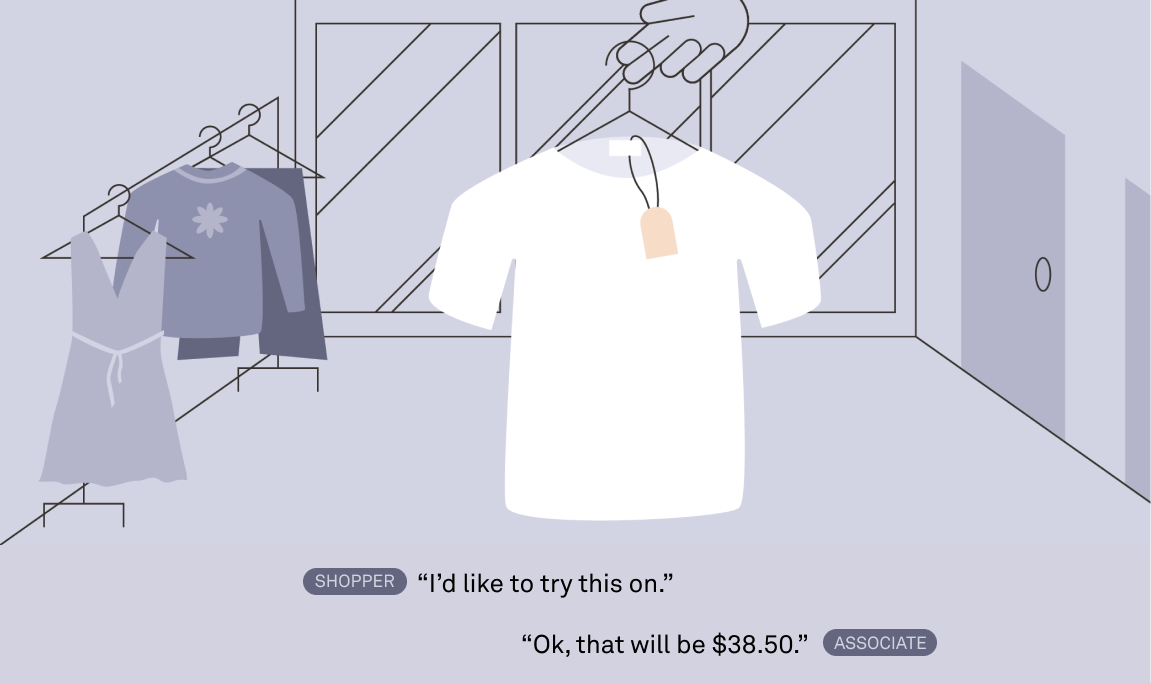Thank you! Someone from our sales team will be in touch to schedule a demo shortly.

In part two of this three part series, we dive deeper into how buying before trying restricts growth, and how we can bring the best elements of commerce past into commerce future.
Diving straight into the deep end: forcing your browsers to buy your product before they try your product suppresses your conversion rates, and for those shoppers who do convert, it suppresses AOV.
The status quo in online shopping -- i.e., buy, then try -- harms shoppers and merchants.
Shoppers are harmed by the pay-to-play nature of online transactions.
The in store shopping experience is an adventure. You probably embark with particular wants or needs: new wireless headphones, a few upgraded wardrobe staples, a statement accessory. In the store, you get to see, touch, and try the product you came in for ... and the other items that may have caught your eye... or maybe something the sales associate recommended! When you find something you love, you approach the cashier with confidence, and with every intention of keeping what you’re buying. This is the joy of finding new things!
But what if, before walking into the fitting room, a store associate asked to ring you up for a total of $232.48? What if before seeing how your phone fits into a purse, or how comfortable a mattress is, you were asked to swipe your credit card? “Don’t worry, anything you don’t like can be returned at the counter up front!”
Would you try any of these things? Of course not! You’re not going to pay just for the privilege of deciding if you like something.
And yet, this is precisely how online shopping works. Pay to play. Buy, and then you can try. Not exactly the best formula for discovering the joy of trying new things.

Merchants are harmed by their limited ability to de-risk online purchases.
This is why, for every shopper delighting in a Brand’s product, another 20-30 shoppers are leaving empty-handed. Whether they gave up while browsing, or with a few items in the cart, this shopper -- who sought out your brand and your products -- couldn't commit.
An online shopper who can only see a few photos and a description of the product is not as confident as the shopper who visited the store and experienced the product for themselves.
Generous return policies or a collection of customer reviews can incrementally increase confidence, but they can only go so far. When it comes to spending your money, the voice you want to hear saying, “I love it!” is your own.
And so, merchants are losing out on interested shoppers, because those shoppers are routinely being asked to part with money for something they might love. Might is not the kind of promise that incentivizes a credit card swipe.

The future of ecommerce is … the past?!
When you think about it, try-before-you-buy has always been fundamental to buying and selling; this is why stores have displays, product demos, free samples, and fitting rooms.
Having questions when shopping for new things is natural, but paying in the face of these questions is unnatural.
At TryNow, we're on a mission to address the 97%+ of browsers that “window shop” online stores, but aren’t converting. To capture more of this audience, ecommerce needs to embrace the power of try-before-you-buy and build it back into the foundation of how we all expect to shop for, discover, and purchase new things.
Keep an eye out for our next post, where we really dig in on what it looks like to renovate this foundation. Spoiler: there's going to need to be some big changes around here!!